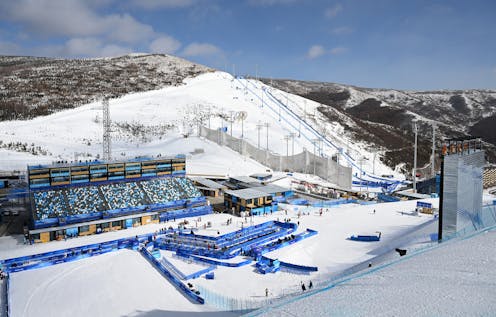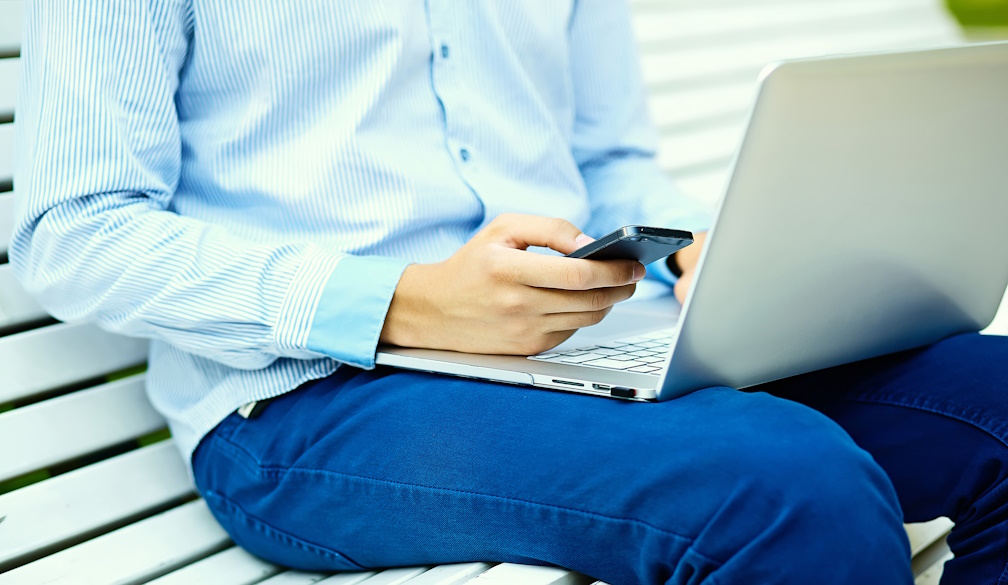We couldn't have the Beijing Olympics without snow machines. How do they work, and what's the environmental cost?
- Written by Chiara Neto, Professor of Physical Chemistry and Australian Research Council Future Fellow, University of Sydney

Snow machines have exploited the laws of thermodynamics to paint the slopes of Beijing white for this year’s Winter Olympics.
Beijing might seem like an odd place for the winter games. The city receives almost no annual snowfall and has an average temperature just below 0℃, even in the winter month of February.
Chinese authorities have used more than 350 snow machines to prepare courses for the world’s athletes. This practice has become more common over the past few Winter Olympics, with the Sochi and Pyeongchang games relying on 80% and 98% artificial snow, respectively.
But isn’t all this artificial snow terribly expensive? If you own an air conditioner and keep half an eye on your energy bill, you’d expect snowmaking to be hugely energy-intensive. The uninitiated might think of snow machines as giant freezers with fans attached, guzzling cities’ worth of electricity to refrigerate entire mountainsides.
This isn’t really the case. Efficient machines in suitable climates (such as Beijing’s) can use as little as 1.5 kilowatts per cubic metre of snow produced. In Beijing’s climate, you could coat a Sydney apartment in a few inches of snow with the same energy the air conditioning would use in an hour.
But that’s not to say there’s no environmental cost. More on that later.
How do snow machines work?
Artificial snow is no chemical trick. The slopes of this year’s event are coated in pure frozen water.
Fundamentally, snow machines work by using a clever thermodynamic exploit, leveraging the natural cooling that happens when water evaporates. And because their cooling power comes from evaporation, they can operate at relatively warm temperatures, up to 1℃ (provided the humidity is low enough).
Here’s how it works. Snow machines expel a fine water mist into the cold, dry atmosphere. Some of the water in each droplet quickly evaporates, carrying away heat and lowering the temperature of the rest of the droplet to below its freezing point. This process is known as “evaporative cooling”, and is the same mechanism that cools us when we sweat.
Because the energy loss required to form ice in this process is driven by evaporation, snow machines don’t have to expend energy to freeze water. They only require energy to power the fans and compressors that disperse the water droplets.
However, as any winter Olympian will tell you, snow is more than just frozen water. And snow machines must produce a blanket of powder worthy of the world’s greatest athletes.
They achieve this by using a “nucleator”, which is basically any substance that makes it easier to form an ice crystal. Without this, the droplets in the mist would end up as supercooled water and clump into large droplets before freezing. This would create undesirably dense and icy snow.
Supercooled water is water which is cooled below freezing point, but which remains liquid because nucleation of the new solid phase is difficult.Nucleators can be chemical or biological, but in Beijing no such aids are being used. Instead, tiny ice crystals are being used as nucleators. These nucleator ice crystals themselves are formed by yet more thermodynamic manipulation, wherein pressurised water is forced through a nozzle, quickly reducing the pressure and breaking it into tiny droplets.
When the pressure of a gas is rapidly reduced, its temperature also drops – which is why deodorant from a pressurised spray can feels cold. In this case, the sudden drop in temperature cools the atomised water well below 0℃, rapidly freezing it into the nucleator ice crystals.
In the final step of the snow-making process, these ice crystals mix with the water mist and are propelled through the air, with the water freezing and falling as artificial snow. Propulsion is achieved either through the use of compressed air, in the case of snow lances, or through blower-type machines with large fans.
The snow that forms in this process isn’t quite the same as real snow, because artificial snow forms quickly from liquid droplets, instead of slowly from water vapour. As a result, the shape of artificial snow particles is different to that in natural snow. The former has no beautiful single-crystal structures, only tiny (polycrystalline) snowballs.
The sustainability question
As our climate warms and weather patterns shift, we’re becoming increasingly dependent on artificial snow to meet the demands of holidaymakers and sportspeople. These Winter Olympics are the first ever to rely on 100% fake snow. And while snowmaking isn’t as environmentally catastrophic as it might first seem, it’s not without drawbacks.
First, artificial snow is made of water, which is undeniably a critical resource. The International Olympic Committee’s (IOC) sustainability report for this year’s games estimates the city of Zhangjiakou, the epicentre of the Beijing games, will use 730,000m³ of surface water for snowmaking alone (almost 300 Olympic size swimming pools).
The amount of water used across the entire Beijing area will be much greater (although there are significant efforts to recapture snow melt, and avoid using an excessive amount of drinking water to make snow).
Second, in warmer climates chemical additives are required to help snow form and stay frozen. And while these aren’t actively toxic, there’s still doubt regarding their safety.
Finally, snow machines produce a lot of snow. Early reports from Chinese media claimed only 200,000m³ of water would be needed for snowmaking. But the IOC’s pre-game report indicates this figure is upwards of 800,000m³.
Depending on which figure is used, the density of the snow created, and how much water is lost to evaporation, the total amount of snow produced could be anywhere from 0.5 to 3 million cubic metres. So while the machines do produce snow efficiently, the total energy usage is still significant.
According to the IOC, in Beijing this electricity demand is being met through 100% sustainable production. This is encouraging, and will hopefully help accelerate the global adoption of environmentally friendly technologies.
Read more: How do Olympic freestyle skiers produce their amazing tricks? A biomechanics expert explains
Authors: Chiara Neto, Professor of Physical Chemistry and Australian Research Council Future Fellow, University of Sydney



















